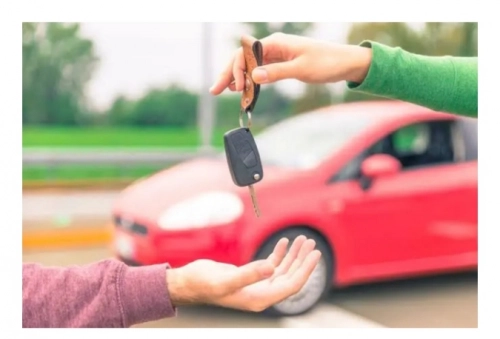profile/9505FB_IMG_1661714538618.jpg
Allison

10 Things You Need To Check Before Buying A Car.
~2.8 mins read
Buying a used car is a great way to get on the road without paying the hefty price of a new one. But how can you know if a used car is the best option for you?
The following check list outlines what to look for when buying a used car from a dealer or private seller for your peace of mind.
1. The vehicle's history
Before conducting your own investigation, you should get as much information as you can from the current owner. To find out if the vehicle has ever been in an accident, if there are any liens against it, or if the model has ever been recalled, enter the VIN (vehicle identification number) into a commercial website like Carfax.
2. Rust or paint deterioration
As you check the car, look for any rusty blemishes or paint nicks. Due to their ease of repair, small, isolated rust spots aren't always a deal breaker. You might want to rethink the purchase if there are any areas where the metal has completely corroded through.
3. Frame-related concerns
While checking the car, you should check the frame for flaws. The car and the ground should be parallel. What, if anything, is suspended from the chassis? Pay particular attention to the bumpers and keep an eye out for signs of recent collisions, such as warping or freshly added fasteners on the bonnet, trunk, or fenders.
4. The engine compartment
Any car's engine is its most crucial component. Open the hood and look inside for rust, fluid leaks, damaged hoses, and belts while the engine is off. Check the dipsticks for discoloration; the transmission fluid should be pink or crimson, and the oil should have a light brown hue.
5. The state of the tires
Each of the four tires should have the same amount of tread wear. Poor alignment, which may be a symptom of problems with the steering, suspension, or frame, can occasionally be indicated by uneven tread or additional wear on a few of the tires. When driving, an automobile with inadequate alignment will veer to the right or left.
6. Mileage
A car gets 20,000 kilometres' worth of mileage annually. Divide the odometer reading by the age of the car to determine whether it has high or low mileage. A car with a high mileage will have more worn-out mechanical parts. The relevance of a secondhand car's high mileage is explained in further detail.
7. Electronic devices in the interior
One of the small joys of owning a car is being able to crank up the radio when your favorite song starts playing. Check the stereo and other technological elements of the cockpit by pressing a few buttons. Switch on the cooling and heating systems.
8. Upholstery.
In a car, the upholstery and seats could become damaged. Because replacing upholstered seats can be expensive, keep an eye out for rips, stains, and cracked leather on all of the front and back seats.
9. Going for a test drive
is probably the most crucial step in buying a used car. To assess the car's handling, acceleration, braking, and suspension, plan your route and put it through its paces. Try driving the car on the highway and practicing parallel parking to learn about any potential blind spots it might have.
10. Mechanics inspection
If you believe you've located the secondhand car of your dreams, you should have a reliable mechanic examine it. An auto technician can identify any underlying problems or potential trouble spots with the car. The service isn't free, though.
Thanks for reading.
Advertisement

Link socials
Matches
Loading...
